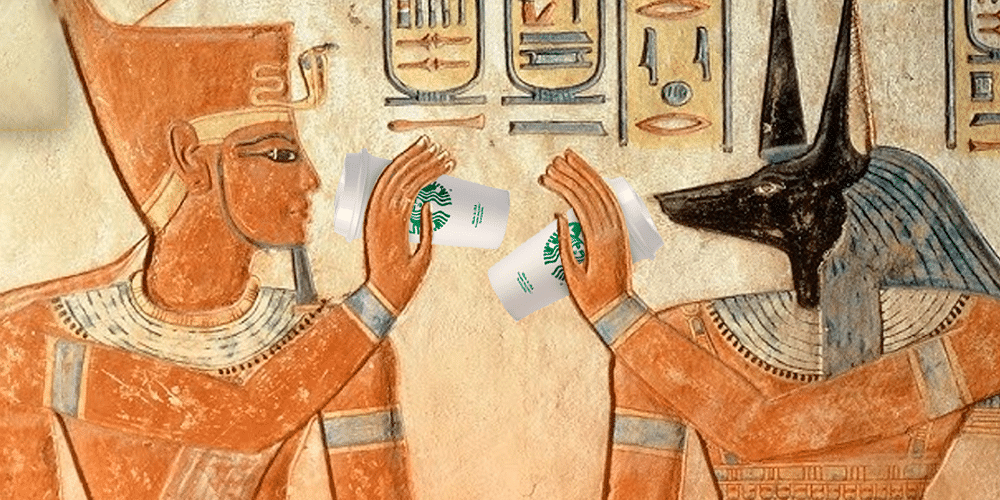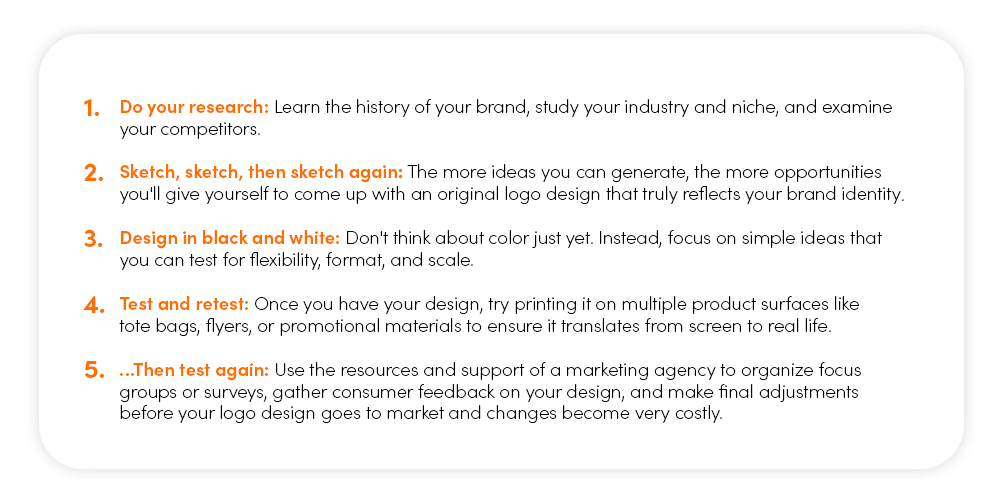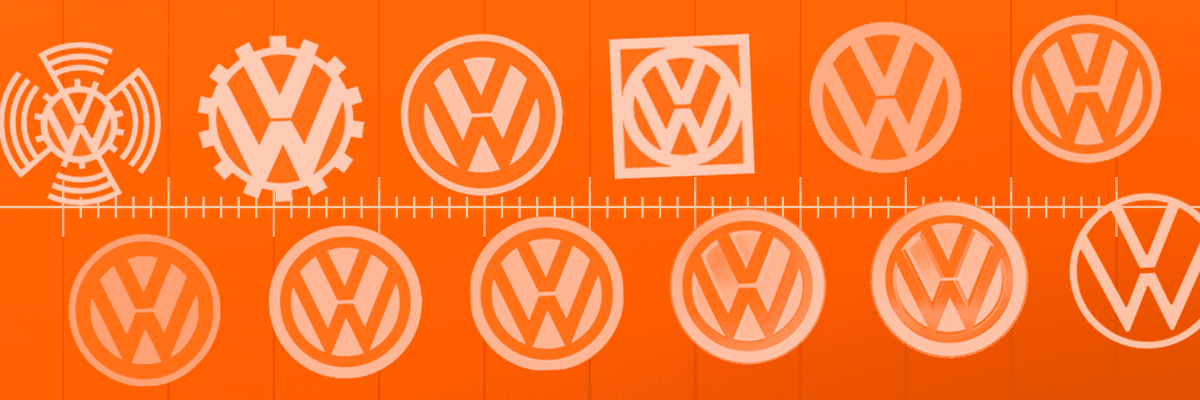Logo evolution is a vital part of growing a successful brand. Even the most recognizable logos have morphed and adjusted over time. But what spurred this logo evolution, and how do logo design rules apply in today’s digital-first economy? The team at (matter) is here to guide you through all the components of logo design, including how it should reflect your brand identity, how to tailor your logo design for digital branding, and how your brand’s own personal logo evolution can help you connect more clearly with customers in a digital and mobile-first world.
Why Logos Are So Vital in Today's Oversaturated Market
It’s no secret that multiple ingredients are needed to create a successful brand recipe, and a well-designed logo is a key element. Consumers are bombarded, both online and in-person, with images, videos, products, slogans – you name it, brands are churning it out at breakneck speeds, trying everything possible to capture their buyers’ attention. But the one item that can cut through the noise and grab an audience’s eyes? Yep, it’s a logo.
We’re not claiming that a logo alone can move products, but they can definitely hurt sales and brand identity if not thoughtfully designed and regularly refreshed. Logos are often more recognizable than a company name: Think the golden arches of McDonald’s, the green-and-white Starbucks siren, or the infamous Nike swoosh.
For many years, marketers needed their logos to be highly visible from long distances like highway exit signs, but in today’s digital age, it’s less important how big your logo appears and more important how memorable your tiny symbol is on someone’s smartphone, car map, or browser. But before we dive into the modern era of digital branding, let’s take a brief detour to examine the roots of logo design.

A Brief History of Logos: From Ancient Egypt to 2024
Did you know that logos have existed since ancient times? The Egyptians are credited with developing the first logos, using hieroglyphics to label and identify their possessions. In medieval times, coats of arms were created to establish identities in battle, denote family alliance, or symbolize different professions.
With the advancement of printing technology in the 1800s, brand emblems gained even more traction, especially after the development of color printing. Yet there was still one large drawback: the logos were too busy.
What we recognize as the modern logo – a simple picture or symbol with distinctive colors or shapes – didn’t exist until 1960, when the Chase Bank insignia debuted as a simple octagonal shape and bright blue hue. In 1972, legendary designer Paul Rand launched the iconic eight-bar IBM logo, which has remained largely unchanged. Since then, logo design has continued to progress.
Shifts away from utilitarian design and toward more abstract and symbolic logos ushered in the era of modern emblems. Logo evolution has kept pace with changes in society and technology, with three prominent examples:
- The development of personal computers
- The release of user-friendly programs like Photoshop and Illustrator
- Most recently, the mainstream adaptation of generative AI tools like ChatGPT and DALL-E.
These advancements opened the doors for marketers to create highly customized logos with memorable texture and detail, and thus the modern logo era was born.
Enter the Mobile-First Era: How Our Increasingly Online World Affects Logo Evolution
The world has grown accustomed to reading, shopping, banking, and living their lives through screens, and to keep up with these consumer preferences, logo design has evolved alongside them. Gone are the days of complex brand designs; marketers are breaking through the digital clutter with simple style.
The digital age has brought additional changes for logos, which now need to be adaptable enough to load quickly on web pages, simple enough to be recognized on small digital screens, and flexible enough to fit both mobile-friendly vertical orientations and horizontal desktop browsers. As if this list of what logos must be wasn’t already long enough, modern brand emblems also must be easily communicated via favicons, mobile ads, and apps and across global languages and cultures.
Today's Logo Design Trends: Keeping Up with the Culture
Two words define the current age of logo design: strong and striking. The 2022/23 logo evolution was all about escapism, largely due to the world’s battle against Covid-19 and all the chaos that pandemic caused. Brands shifted toward playful lines, retro lettering, and abstract patterns. In 2024, current trends reflect a different cultural vibe.
This year’s digital branding is all about being bold, fearless, and expressing your unique and individual personality. As the (matter) team works within multiple industries and vertices to help clients grow their brands and consumer bases, we’ve noticed a few key logo design trends that your company could consider leveraging.
- Archive-inspired logos that highlight the established stability of a brand: Think recent Burberry or Pepsi rebrands.
- Eco-modern designs that connect brands with nature, sustainability, and environmentally friendly practices. You’ll see eco-modern logos from companies like Tropicana and Faithful to Nature.
- Angular, industrial text printed in starkly contrasting colors that conveys a sense of brand confidence, which you’ll find on logos from FedEx to Rolex.
- Bold color blocking or 3D imagery that can stand out and create excitement, a trend you’ll see in household brands like Lego and Netflix.
- Handcrafted typography that mirrors the cut-out letterforms and shapes of years past, a concept that HER Tea Company and past iterations of the Yahoo! logo have perfected.
- Geometric or symmetrical logo design that’s easy on the eyes and easy to scale, like Under Armour or Chanel.
- Solid silhouettes that fill negative space with colors or shapes to create strong, bold, and slightly offbeat insignias in the vein of USA Network.
Best Practices for Modern Logo Design: How to Join the Logo Evolution
All these trends can seem overwhelming at times, but the experts at (matter) have a few proven tricks up our sleeves that can help you elevate your logo design to match mobile-first trends.

Up Your Digital Branding Game: Call in the Experts at (matter)
If you’re feeling overwhelmed at the idea of overhauling your logo design to keep up with today’s logo evolution, that’s normal! A logo is one of the most critical elements of your brand, and you deserve to get it right. The experts at (matter) have decades of experience developing logos and visual identities for brands in every industry.
Our proven practices can help your company’s designers create effective logos, conduct market research, sketch symbols, and test designs. Explore the (matter) portfolio online to see our past work, then contact us when you’re ready to level up your logo design game!
